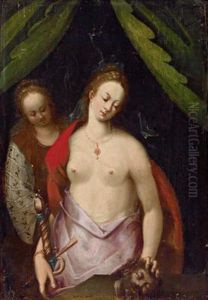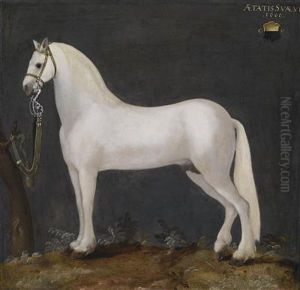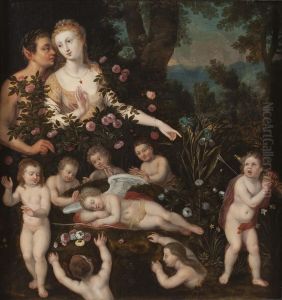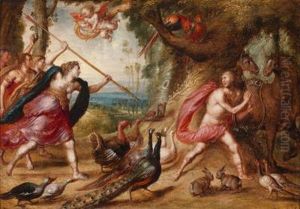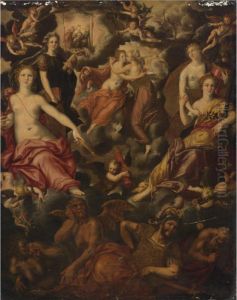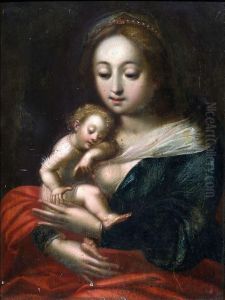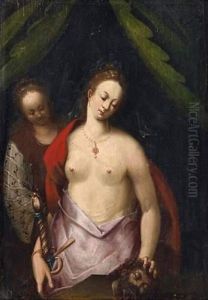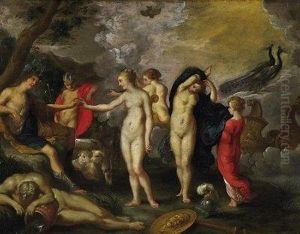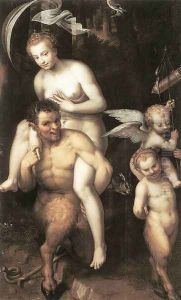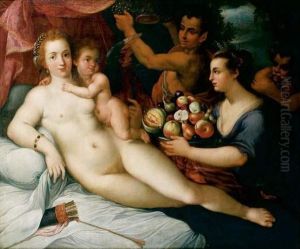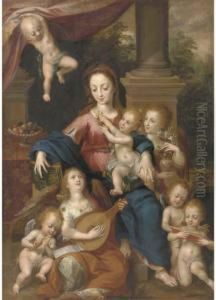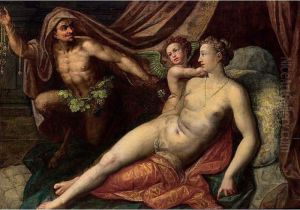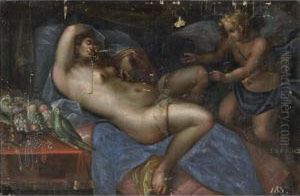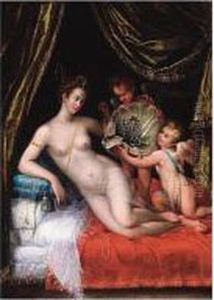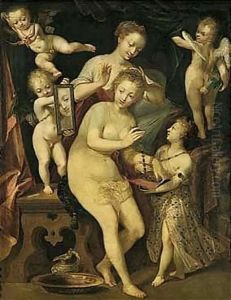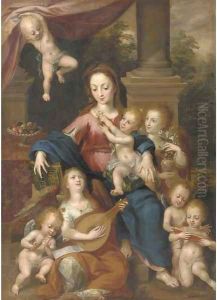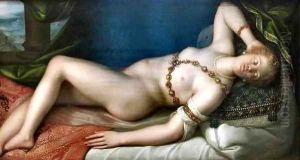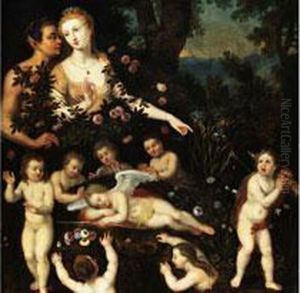Dirck de Quade Van Ravesteyn Paintings
Dirck de Quade van Ravesteyn was a Dutch painter and draftsman belonging to the late sixteenth and early seventeenth century. Born in 1565, he is known for his detailed portrait work and his association with the Northern Mannerist style that was prevalent in the Netherlands during the transition from the late Renaissance to the early Baroque period.
Dirck's early life and training are not thoroughly documented, but it is believed that he was part of a family of artists. His work suggests that he may have been influenced by or had connections with more prominent artists of his time, such as the brothers Frans and Paulus Moreelse, who were known for their portraiture.
Throughout his career, van Ravesteyn's paintings were characterized by meticulous attention to the textures and details of clothing and jewels, which was typical of the Mannerist style's focus on elegance and artifice. His portraits often depicted sitters in elaborate costumes with a stiff, formal elegance, reflective of the courtly and aristocratic clientele that he served. Van Ravesteyn's works are noted for their sophisticated use of color and their detailed depiction of fabrics and lace, which added a luxurious quality to his portraits.
Van Ravesteyn spent most of his career in The Hague, where he became a member of the painter’s guild. He was also among the artists who worked on the decorations for the Triumphal Arch for the entry of the Prince of Orange in The Hague in 1618, which was one of the significant public commissions of his time.
Dirck de Quade van Ravesteyn's death is recorded in 1620. His artworks continued to be appreciated after his demise, particularly for their historical value in representing the fashion and individuals of the Dutch upper class during the late Renaissance. His contributions to Dutch art are often overshadowed by the later achievements of the Dutch Golden Age painters, but his work remains an essential link in the artistic developments of the Netherlands.
